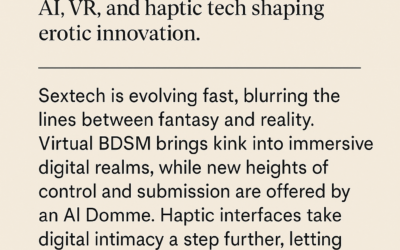🧭 1. Origins: From Subculture to Couture
Fetish styles—think latex, leather, corsets—originated as niche aesthetics tied to BDSM and underground communities. These materials functioned as “second skins,” offering sensory indulgence and transgressive appeal (Wikipedia). Designers like Kim West and Murray & Vern were pivotal in introducing latex fashion to UK mainstream audiences in the 1980s and ’90s.
2. Designer Adoption & Celebrity Endorsement
High fashion houses like Thierry Mugler, Alexander McQueen, and Atsuko Kudo brought fetish aesthetics to the runway. Celebrities such as Kim Kardashian and Lady Gaga embraced the look, further normalising it. For more on this cultural shift, explore our own blog on Celebrity Latex Looks.
3. The Power of Social Platforms
Instagram and TikTok are central to the fetish-to-fashion pipeline. Hashtags like #latexfashion and #feetchallenge amplify trends, while creators like Macy Eleni inspire thousands with daring latex outfits. Even foot-focused aesthetics have emerged into the spotlight, with The Guardian noting how toe-centric designs now lead seasonal trends. Our article, Exploring the Kink Aesthetic in Fashion, dives deeper into these visual evolutions.
4. Fetish Kinks to Trend-Hype
- Latex: From clubs to couture, latex has exploded in colour and formality. See how it’s the glossiest trend of the season in this FashionTalk article.
- Foot Worship: No longer just for fetish circles, foot aesthetics now appear in mesh shoes, toe jewellery, and spa-led self-care TikToks.
- Cuckolding: Less fashion-forward but increasingly mentioned in erotic media and mainstream storytelling—framing desire as dialogue.
5. The Role of Kink-Normalising Media
Books like Second Skin analyse how queer identity, fetish wear, and celebrity culture converge. As Wallpaper Magazine notes, the book critiques how commodification and visibility intersect in today’s style culture.
6. The Trend Loop: From Underground to Ubiquitous
- Subculture experimentation

- Influencer-led DIY styling
- Celebrity endorsement
- High-street diffusion
- Cultural normalization
Latex skirts at Zara or toe-showcasing heels at H&M confirm the loop has closed.
🔍 Why It Matters
Fetish aesthetics signal changing societal norms around sensuality, autonomy, and expression. They offer fashion designers and wearers alike a bold way to blend identity, empowerment, and style. Curious how this impacts self-presentation? Check out Domin8trix’s latest guide on personalising your aesthetic.
Final Thoughts
Fetish has become fashion not just through bold design, but through strategic visibility—boosted by platforms like TikTok and X. As latex, foot worship, and cuckolding themes re-enter the zeitgeist, what was once taboo is now totally trend-forward.






0 Comments